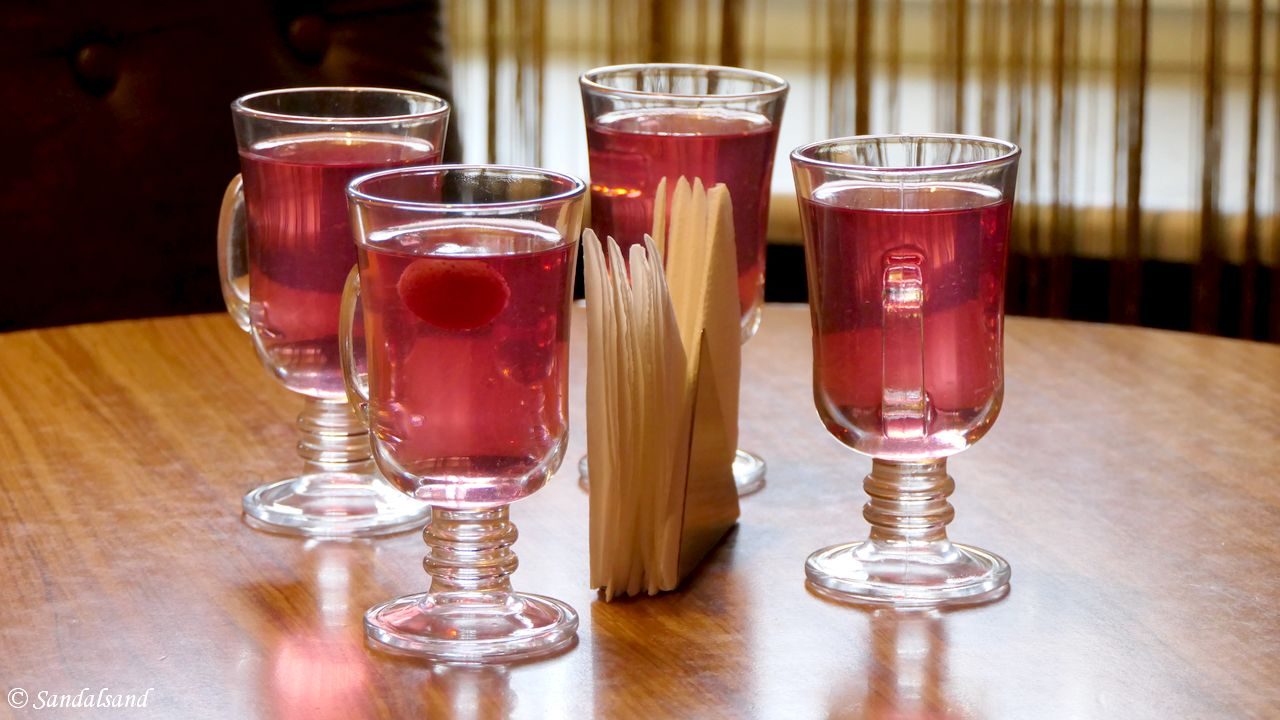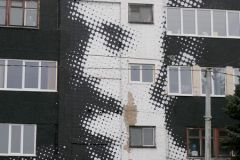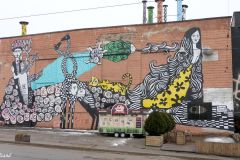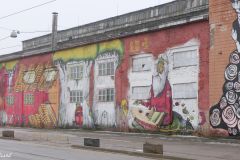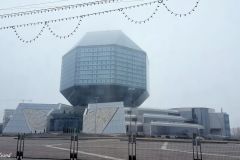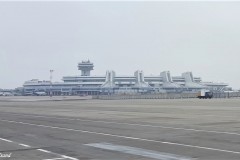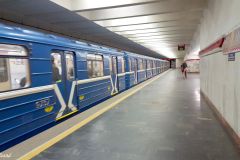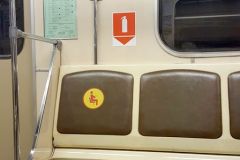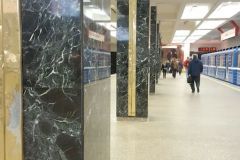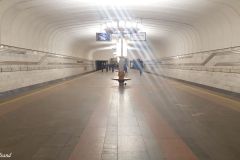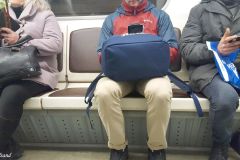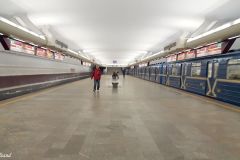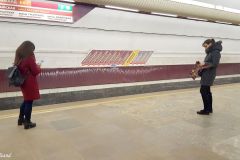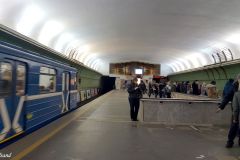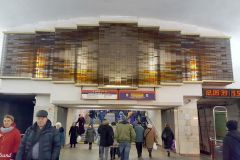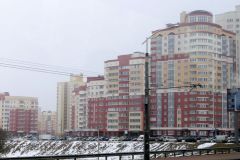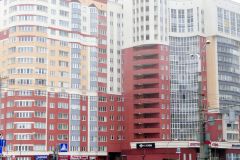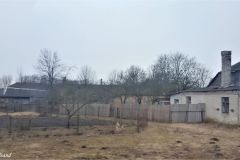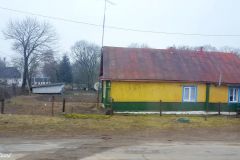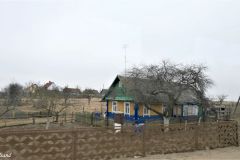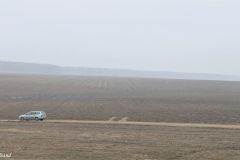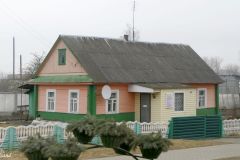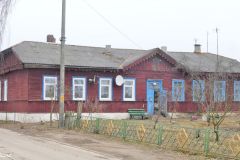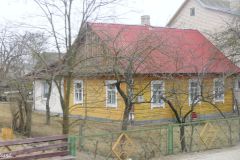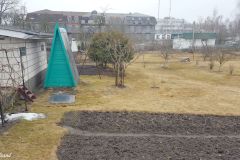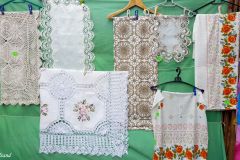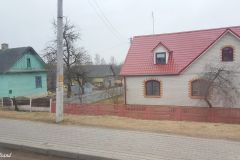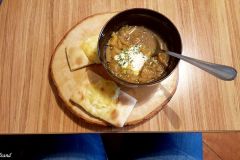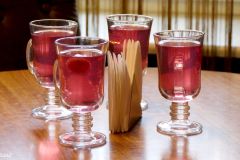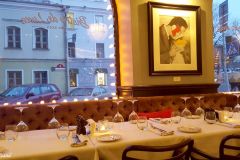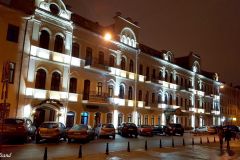This article presents alternative highlights from Minsk, above and below ground. It also deals with accommodation, restaurants, and practical information about getting into a previously closed country.
Map of attractions in Minsk
I made a map before going to Minsk, added places while I was there and finished it when I returned home. Feel free to expand the map into a new window, and click the markers.
If you zoom in on the map you will find that a blue line connects most of the markers. That is my suggested one-day do-it-yourself walking tour of Minsk. It is about 7 km long.
Minsk sights outside the city centre
I have also marked a few places outside the city centre on the map. Four of them might be combined in a second walk, one that I skipped. Start for instance at the Palace of Independence in the upper left side of the map. It is a huge building serving official ceremonial and state functions and meetings. Follow the river through Victory Park to the Great Patriotic War Museum and finish off at the Yama Memorial.
The war museum was actually established during the Second World War, known in Eastern Europe as the Great Patriotic War. It has a terrible story to tell. One out of three inhabitants in Belarus were killed, totalling more than 3 million. Yama is a memorial to the 5,000 Jews from the Minsk Ghetto who were executed on this spot on March 2, 1942. In all, almost all 80,000 Jews detained in the ghetto were killed during the war.
The map marker named Murals of Kastrychnitskaya street is found on the opposite side of the city centre. It indicates a sight of a totally different kind. The murals are modern day street art, or graffiti some would say. I took the metro out for a walk in the streets. The artsy area is not large but it makes for an interesting twist to the other sights in central Minsk.
The National Library is on the way to the airport. It opened in 2006 and is a monumental complex of considerable pride to the authorities and people of Belarus. Unfortunately I did not find time to visit it.
Minsk sights below the ground
Like some of the other former Soviet big cities, Minsk has a metro system (i.e. underground, tube, subway). Moreover, some of the stations are more vividly decorated than others, almost leaving the impression of being in an art museum. Some motifs draw inspiration from Belarusian history, other are more classic Soviet socialism. The latter is a bit surprising considering the fact that the first (blue) line on the metro system opened to the public as late as 1984. The second line (red) opened in 1990 and a third line (green) is under construction. The blue and red lines have been extended over the years.
Head for the marker on the map called Central Metro Junction and buy a ticket. Unless you leave a station there is no need to buy another one. Spend an hour or so seeking out the most interesting stations, get off for a closer look, and take the next train onward. I knew nothing of the stations while there, but after I returned home from Minsk I came across a website with photographs from all stations. Here are some ideas from my selection.
A drive into the countryside
During my stay in Minsk I managed to make a full-day excursion to two UNESCO World Heritage Sites south of the capital. Read about them in these articles:
World Heritage #0625 – Mir Castle Complex: A walk around the walls of this Belarus castle reveals its turbulent history throughout the centuries. The inside offers a restored insight into the achievements of a wish to belong to a common European heritage.
World Heritage #1196 – Architectural, Residential and Cultural Complex of the Radziwill Family at Nesvizh: It has been said that the Nesvizh Palace is the most beautiful palace in Belarus. It seems clear that its diverse architecture and attractive gardens make it one of the most popular tourist attractions in the country.
The drive to these palaces/fortresses involved a look at some interesting residential areas in the suburbs of Minsk, as well as impressions from villages and small towns in the countryside.
Sleep and eat
I have over the years been making it a habit to search for affordable, locally owned, traditional accommodation in a central location, wherever I travel. In Minsk I found Hotel Garni. There are other places in the city, but for me this was perfect. A very good room, breakfast and service.
On the map I have marked three restaurants or cafes worth checking out. The one closest to my hotel is called Bistro de Luxe and is just that. Prices are high, food is not national and service is good. This is not what you would expect in Minsk (no offense). Another place I tried out was the News Cafe, a favourite among expats and actually an oasis in the midst of everything else in this city. On my walk I stumbled upon a modern-like place in the Trinity Hill area. It is called Staryy Gorod and offers both local and not so local cuisine. In case you are in doubt, they speak English in all these places.
I also had dinner at a popular place in the old city, can’t remember the name but it was not worth mentioning anyway. In case you are suffering from home sickness, there was a McDonald’s not far from my hotel (zoom in on the map) and a TGI Friday’s opposite. I didn’t go there of course, but there is a very well equipped supermarket next to them. Minsk is at least in some respects not lost in the Cold War.
Practical advice
Three nights were not sufficient of course, and with the visa I acquired at the border I could have stayed another night. A visit to Belarus has previously been a quite difficult task but a recent change has made it possible for citizens of many nations to get a five-day visa on arrival at Minsk airport. For some reason you will have to provide a good travel insurance (or buy one at the airport) and arrive and depart from the airport on a flight not originating in or departing to Russia. The reason for this is that there are no border controls between Belarus and Russia. Border-crossings on land is possible, but not on this quick-fix visa, and you will need to check the details.
I arrived late at night, fearing a militarised red-tape customs and passport control procedure and was relieved. I have rarely seen a more efficient and smooth service. An equally good taxi service outside the terminal led to a relaxed transport into Minsk and the doorsteps of my hotel. Leaving the country a few days later gave me the same impression. A visit to Belarus is no problem at all.
Some observations and more to read
Here’s a bullet list of observations:
- Street signs in Minsk has only Cyrillic letters
- In Minsk they are able to speak English in restaurants and in my hotel. In the museums they did not, but that didn’t matter much
- Getting around town, on my walking route, with an offline Google Maps on your smartphone is very easy
- Buying metro (subway) tickets is not a problem
- Stores and supermarkets seem well equipped
- Using a credit card is no problem and there are ATMs
Read all articles from Belarus.
I arrived in Minsk on a flight from Kyiv where I had spent the first days of my 2018 Easter holiday.

